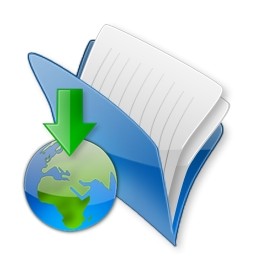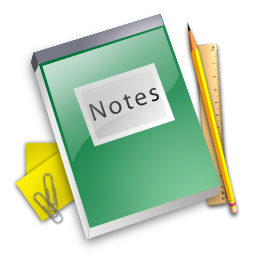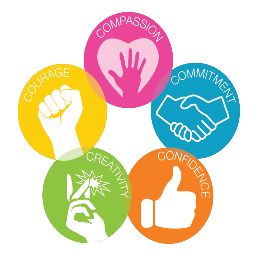Economics
CBSE XI class Economics has two books one on Indian economy and other on statistics. myCBSEguide provides compete course content for both the books. The topics covered are Introduction, Collection of Data, Organisation of Data, Presentation of Data, Measures of Central Tendency, Measures of Dispersion, Correlation, Introduction to Index Number, Indian Economy on the Eve of Independence, Indian Economy 1950 -90, Economic Reforms Since 1991, Poverty, Human Capital Formation in India, Rural Development, Employment: Growth Informational and other Issues, Infrastructure, Environment Sustainable Economic Development, Inflation: Problem and Policies, Development Experience Of India a Comparison with Neighbors.

CBSE, JEE, NEET, CUET
Question Bank, Mock Tests, Exam Papers
NCERT Solutions, Sample Papers, Notes, Videos

myCBSEguide App
Complete Guide for CBSE Students
NCERT Solutions, NCERT Exemplars, Revison Notes, Free Videos, CBSE Papers, MCQ Tests & more.
Download CBSE class 11 Economics study material in PDF format. MyCBSEguide provides solved papers, board question papers, revision notes and NCERT solutions for CBSE class 11 Economics. The topics included are Introduction, Collection of Data, Organisation of Data, Presentation of Data, Measures of Central Tendency, Measures of Dispersion, Correlation, Introduction to Index Number, Indian Economy on the Eve of Independence, Indian Economy 1950 -90, Economic Reforms Since 1991, Poverty, Human Capital Formation in India, Rural Development, Employment: Growth Informational and other Issues, Infrastructure, Environment Sustainable Economic Development, Inflation: Problem and Policies, Development Experience Of India a Comparison with Neighbors.Economics
Part A: Statistics for Economics
In this course, the learners are expected to acquire skills in collection, organisation and presentation of quantitative and qualitative information pertaining to various simple economic aspects systematically. It also intends to provide some basic statistical tools to analyse, and interpret any economic information and draw appropriate inferences. In this process, the learners are also expected to understand the behaviour of various economic data.
Unit 1: Introduction (
What is Economics?
Meaning, scope and importance of statistics in Economics
Unit 2: Collection, Organisation and Presentation of data
Collection of data - sources of data - primary and secondary; how basic data is collected, with concepts of Sampling; methods of collecting data; some important sources of secondary data:
Census of India and National Sample Survey Organisation.
Organisation of Data: Meaning and types of variables; Frequency Distribution.
Presentation of Data: Tabular Presentation and Diagrammatic Presentation of Data: (i) Geometric forms (bar diagrams and pie diagrams), (ii) Frequency diagrams (histogram, polygon and ogive) and (iii) Arithmetic line graphs (time series graph).
Unit 3: Statistical Tools and Interpretation (
(For all the numerical problems and solutions, the appropriate economic interpretation may be attempted. This means, the students need to solve the problems and provide interpretation for the results derived.)
Measures of Central Tendency- mean (simple and weighted), median and mode
Measures of Dispersion - absolute dispersion (range, quartile deviation, mean deviation and standard deviation); relative dispersion (co-efficient of range, co-efficient of quartile-deviation, co-efficient of mean deviation, co-efficient of variation); Lorenz Curve: Meaning, construction and its application.
Correlation - meaning, scatter diagram; Measures of correlation - Karl Pearson's method (two variables ungrouped data) Spearman's rank correlation.
Introduction to Index Numbers - meaning, types - wholesale price index, consumer price index and index of industrial production, uses of index numbers; Inflation and index numbers.
Part B: Indian Economic Development
Unit 4: Development Experience (1947-90) and Economic Reforms since 1991: (
A brief introduction of the state of Indian economy on the eve of independence. Common goals of Five Year Plans.
Main features, problems and policies of agriculture (institutional aspects and new agricultural strategy, etc.), industry (industrial licensing, etc.) and foreign trade.
Need and main features - liberalisation, globalisation and privatisation; An appraisal of LPG policies
Unit 5: Current challenges facing Indian Economy (
Poverty- absolute and relative; Main programmes for poverty alleviation: A critical assessment;
Rural development: Key issues - credit and marketing - role of cooperatives; agricultural diversification; alternative farming - organic farming
Human Capital Formation: How people become resource; Role of human capital in economic development; Growth of Education Sector in India
Employment: Formal and informal, growth and other issues: Problems and policies.
Inflation: Problems and Policies
Infrastructure: Meaning and Types: Case Studies: Energy and Health: Problems and Policies- A critical assessment;
Sustainable Economic Development: Meaning, Effects of Economic Development on Resources and Environment, including global warming.
Unit 6: Development Experience of India: (OTBA) (
A comparison with neighbours
India and Pakistan
India and China
Issues: growth, population, sectoral development and other developmental indicators.
Part C: Developing Projects in Economics (
The students may be encouraged to develop projects, as per the suggested project guidelines.
Case studies of a few organisations / outlets may also be encouraged. Under this the students will do only one comprehensive project using concepts from both part A and part B.
Some of the examples of the projects are as follows (they are not mandatory but suggestive):
(i) A report on demographic structure of your neighborhood.
(ii) Changing consumer awareness amongst households.
(iii) Dissemination of price information for growers and its impact on consumers.
(iv) Study of a cooperative institution: milk cooperatives, marketing cooperatives, etc.
(v) Case studies on public private partnership, outsourcing and outward Foreign Direct Investment.
(vi) Global warming.
(vii) Designing eco-friendly projects applicable in school such as paper and water recycle.
The idea behind introducing this unit is to enable the students to develop the ways and means by which a project can be developed using the skills learned in the course. This includes all the steps involved in designing a project starting from choosing a title, exploring the information relating to the title, collection of primary and secondary data, analysing the data, presentation of the project and using various statistical tools and their interpretation and conclusion.

myCBSEguide
Trusted by 1 Crore+ Students

Test Generator
Create papers online. It's FREE.

CUET Mock Tests
75,000+ questions to practice only on myCBSEguide app
 myCBSEguide
myCBSEguide






